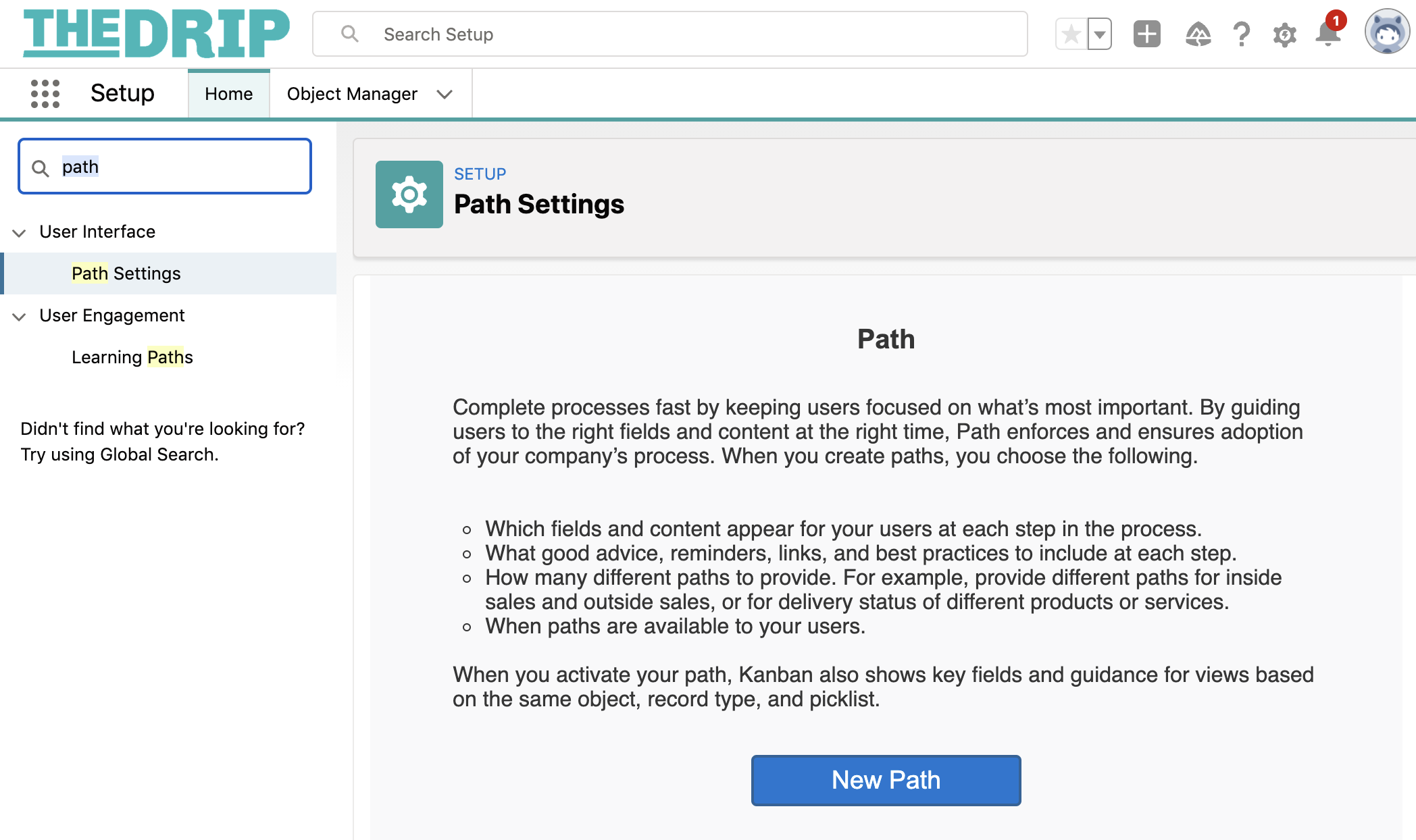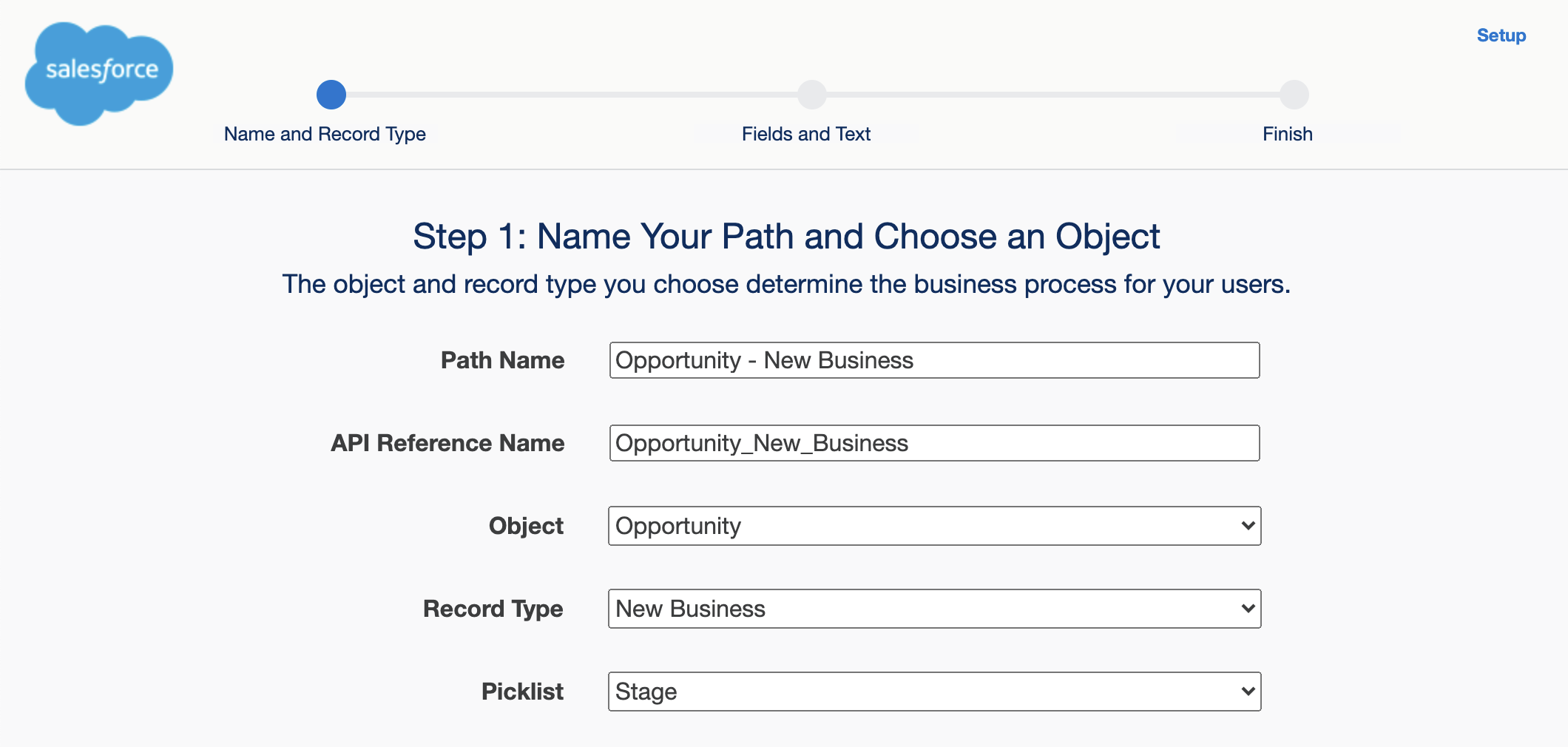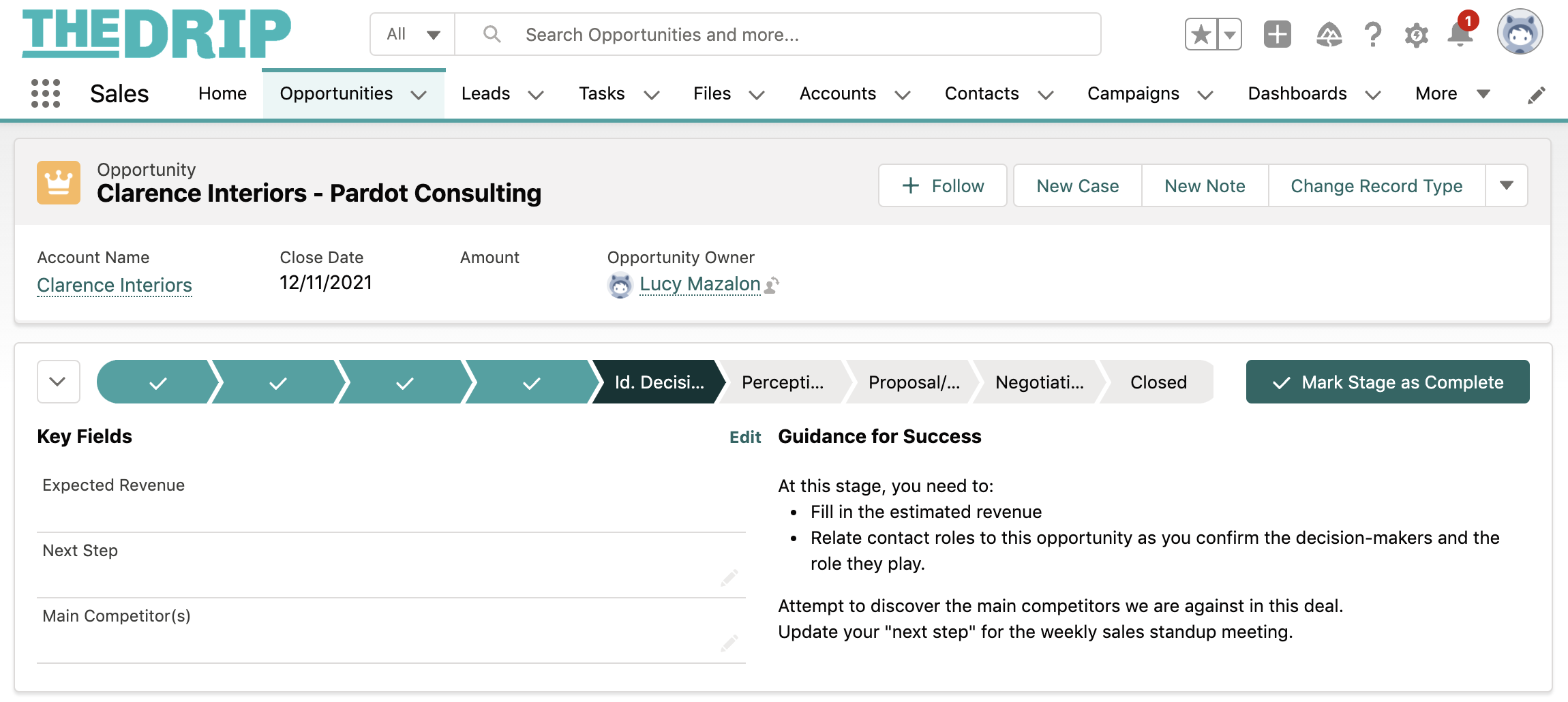Salesforce Path visualizes a record’s progress through a process in a chevron diagram, plus key fields and guidance for what should be completed at each stage.
Path is a Lightning component that can be placed on Opportunities, Leads, Campaigns, Contracts, Orders, and even custom objects. If your org uses record types, adding Path is an added bonus to clearly show which record type the record belongs to, for example, a “New business” opportunity Path will look different to the “Renewal” Path.
I will show you how to add Path to page layout in Salesforce, and three use cases to get you started.
When to Use Salesforce Path
Salesforce Path guides users through a series of stages and the expected actions at each stage. Benefits you can enjoy from implementing Path include:
- New user onboarding – especially if your organization is fast-growing or there’s high employee turnover.
- Training users on system changes – low-touch from the admin. Plus, discovering functionality by doing something is a more effective way to learn.
- Increase validation, such as Validation Rules and required fields, as your users will be better equipped to graps your requirements, thanks to key fields.
How to Create a Sales Path in Salesforce
Let’s take the sales team, who are heavy users of Salesforce opportunities and like to see the road ahead for the deal (fact: Path was first available on opportunities before other objects).
1. In Salesforce Setup, navigate to: Path Settings → New Path
2. Name the Path, select the object, and record type (if applicable). I align the names of my paths [object name – record type name].
3. Select the picklist field. Path can be based on any picklist field (the picklist values will display from left to right, following how they are ordered in setup).
4. Adding the fields and “Guidance for Success” is so easy, you don’t even need a tutorial for it! Click through each Picklist value to build up a picture of what your reps to concentrate on. The text can include up to 1000 characters, including images and links.
5. Activate your Path (optionally, you can enable Celebrations for on-screen confetti, covered later in this guide).
6. As you are creating a Path on a standard object, the Path component is added to the page layout by default. For custom object Paths, you will need to know how to add the Path to the page layout (covered later in this guide).
Repeat these steps for each record type (if applicable).
Here is the end result. Below, you can compare a “New Business” opportunity with a “Renewal” opportunity. Notice the difference in the Path lengths:
Enable Celebrations
Admins can “flick a switch” at the final stage of setting up Path. It’s a nice touch, especially as updating Salesforce is usually a solitary task!
How to Add Salesforce Path to a Page Layout
If you are creating a Path on a standard object, the Path component is added to the page layout by default. For custom object Paths, you will need to know how to add the Path to the page layout.
Here’s the thing – as Path is a Lightning component you don’t add Path to a page layout – you add Path to Lightning record pages.
So, how do you add a Path to your Lightning page?
- Head to any record page → click the cog icon (top of the screen) → Edit Page. This launches the Lightning record page configuration.
- Search for “Path” in the components menu, then drag-and-drop the component at the top of the page (recommended, but you have the freedom to position it anywhere)
- Click ‘Save’


Tips for Salesforce Guidance
Here are some tips I’d like to share on how to set up Guidance for Success in Salesforce:
- Limited to a maximum of 5 fields – so be selective!
- Include required fields and fields involved in Validation Rules.
- Keep best practices concise. Link out to additional documentation if required.
- Guidance can link out to user feedback surveys.
- Hover over to view the duration the record was in that specific stage.
- Kanban view: when Path is enabled, the key fields and guidance will be displayed on the Kanban cards.
Summary
The benefits that Path can deliver are obvious, giving a boost to user engagement (they get it) and adoption (they want to use it). Visualization features, like Path, should never be underestimated.
For more of our favorite Salesforce Lightning features, check out these ones you should implement in your org.







Comments: